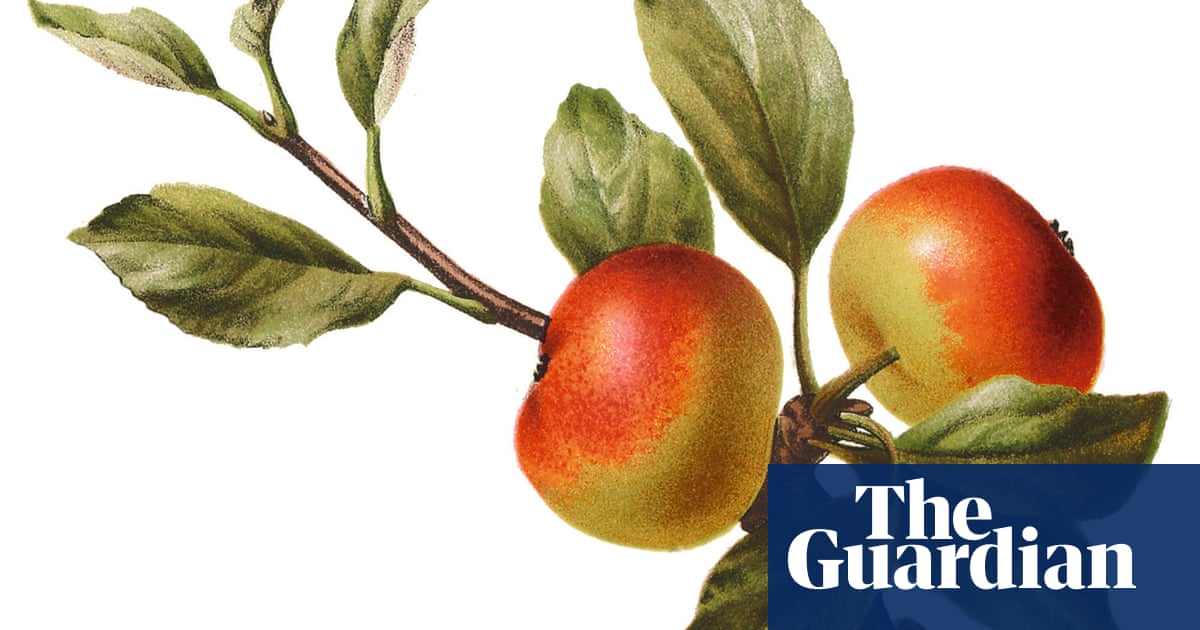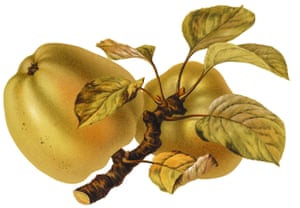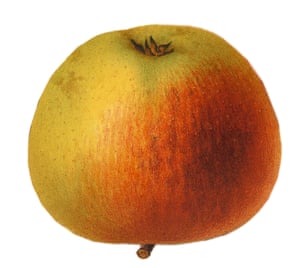From catshead to ribston pippin, some of the most delicious apples rarely find their way into supermarkets. These heritage varieties are worth seeking out

Picture the scene: you walk into your local pizzeria, and on the menu is a choice between margherita and romana … no fiorentina, no quattro stagioni and definitely no double pepperoni with extra cheese. Wouldn’t you feel short-changed, even outraged? So why don’t we feel the same when shopping for apples?
British supermarkets typically stock a dozen or so varieties and, even in this prime apple-harvesting month, some will be imports from the other side of the world. All year, all over the country, the lineup is predictable: braeburn, Pink Lady, jazz, gala, cox, golden delicious, granny smith, maybe egremont russet (“for the discerning palate”). And bramley for cooking.
The National Fruit Collection at Brogdale, Kent, holds more than 2,000 varieties of apple tree in its “living library”, so this paltry list represents less than half of 1% of what could be available. Since they were first brought here by the Romans, apples have been bred to give us an incredibly rich heritage of shapes, textures and flavours, and October is the perfect time to do our bit for apple diversity. You can taste and buy at local farmers’ markets and at Apple Day celebrations throughout the month]. Especially, ask about local varieties, from keswick codlin and worcester pearmain to cornish aromatic and beauty of kent.
Api
There’s a whole api family, and they are the daintiest little fruits imaginable – api noir, in deepest maroon, is easily mistaken at a distance for a plum. You may also be able to track down api rose and api etoilé. They were often called lady apples, as they could slide into a purse or reticule without producing an unsightly bump – perfect for today’s lunchbox. Api are French in origin and said to have originated in the Forêt d’Apis in Brittany (an old French nursery rhyme begins: “Pomme de Reinette et pomme d’Api”). They are sweet, with a pleasing crunch.
Dumelow’s seedling
Ask for a cooking apple in Britain and you’ll get a bramley. Fact. Nothing wrong with a bramley – it’s an excellent apple – but in the 150 years or so since it hit the fruit stalls it has ousted all alternatives. But dumelow’s seedling also lends itself to fluffy puddings and smooth, tart sauces. Raised in Leicestershire in the 18th century, it was once one of the most prized for baking. Others to look out for are golden noble and grenadier.
Court pendu plat
This is a variety that has been established here for centuries, although its name gives away its French origins. And it’s a name that sounds infinitely better in French, as it translates, roughly, as “short-stalked and stumpy”. It was often found in Tudor orchards and its great taste has meant it has never been entirely lost, even if it has become a bit of a rarity. Definitely one to seek out, especially if you’re partial to some russeting on your apples. Russet – the sandpapery roughness that is a feature of many heritage apples – can come as a surprise to palates used to shiny, smooth “new-style” apples, but it adds another dimension of interest and character.

Catshead
It can take a little imagination to see the feline features in catshead’s bulbous, ribby shape, but as with others named in the same spirit – dog’s nose, sheep’s nose and duck’s bill, to mention just three – the characteristics are there if you look for them, if you squint a little. Catshead is an ancient British variety that makes a good all-round cooker: slices keep their shape reasonably well for an open tart, and it makes a sharp, flavoursome puree. Its fairly thick, slightly greasy skin, which helps preserve it through the winter, makes it good for baking, too.

Peasgood’s nonsuch
“Nonsuch”, “nonpareil” and other superlatives have been attached to a fair number of apples. It’s usually a good indicator of quality, and this apple is a star. It looks attractive – greeny-gold heavily flushed red on the side exposed to full sun – and it works as an eater and a cooker. Stew or bake it and you won’t need to add much, if any, honey or sugar. Or just enjoy it raw. This is a Lincolnshire apple: although credited to a Stamford man called John Peasgood, the honours should go to his wife, Emma, who grew the original tree from a pip while a girl in the 1850s.
Ribston pippin
While no longer a favourite among commercial growers (fruit and trees a little too unmanageable?), the ribston has never lost the esteem of connoisseurs. It’s a pretty apple, with a rich flavour that perfectly balances sweetness and acidity. It’s good eaten fresh or cooked – excellent in a pie – and it’s also popular with cider makers. The first tree was raised at Ribston Hall in North Yorkshire in the early 18th century, and in the 1820s it was probably the apple Richard Cox chose to be parent to his world-famous cox’s orange pippin.
Ashmead’s kernel
Looks can deceive, and the modest exterior of ashmead’s kernel conceals a rich complexity of flavour. It is sweetly fruity and astringent, with a distinctive aftertaste that some have (I think unkindly) likened to peardrops. Which flavours dominate will depend on when you eat it: an ashmead’s picked now will taste quite different from one picked at Christmas, or from one kept in storage. There are conflicting theories about who Ashmead was, but in favour is one that says the original tree arose in the garden of William Ashmead, who lived in or close to Clarence Street, Gloucester.
Herefordshire beefing
Beefings – there are several varieties, including herefordshire, norfolk and striped – are curiosities. They are primarily culinary apples, but rather than fluff or melt, the meaty flesh becomes soft and dense. They gave their name to biffins, a once-popular treat made by baking whole apples in a cool oven for several hours, weighted down to flatten them (a beefing’s tough skin made it ideal for this treatment), resulting in a rich, caramelised sweetmeat. Views vary on the origin of the name: it may relate to their “beefy” looks, especially when dried.
Blenheim orange
The history of many apples is lost in the mists of time, but that of the blenheim orange is well documented. The first sapling sprang up in about 1740 beside the garden wall of the still-new Blenheim Palace. One George Kempster recognised the potential of its sweet, firm apples and the trees he propagated gained local renown as Kempster’s pippin (“pippin” is commonly attached to an apple from a chance sowing rather than deliberate hybridising). In 1804, the fourth Duke of Marlborough permitted it to be renamed blenheim orange. Aficionados appreciate a blenheim with cheese. The apple also works well in salads, as the cut flesh does not brown quickly. Storing enriches the flavour – these apples keep until Christmas.
Tower of glamis
Scotland has many heritage varieties of apple, and this is a crisp, aromatic cooker that “stews down very well”, according to the cooks at Glamis Castle’s visitor kitchens. Tower of glamis was one of the varieties grown extensively during the 19th century in the orchards that stretched across Clydesdale and the Carse of Gowrie. It doesn’t appear to have been bred at the castle itself, but its name carries all the seductive images of Scottish royalty and romantic castles – a minor Scottish treasure.
Heritage Apples by Caroline Ball is published by the Bodleian Library. To buy for £22 (RRP £25) go to bookshop.theguardian.com or call 020 3176 3837. P&P charges may apply.
Read more: www.theguardian.com








![[Video] How to get rid of bed bugs in Toronto](https://www.thehowtozone.com/wp-content/uploads/2019/10/maxresdefault-2-100x70.jpg)


